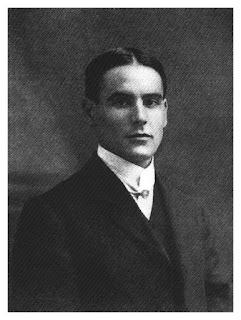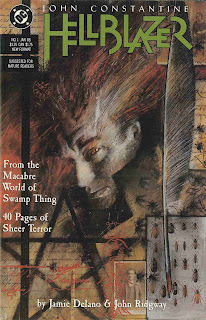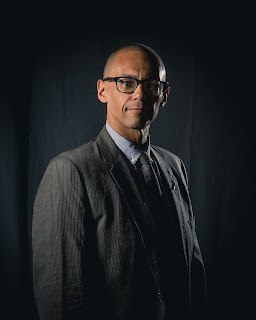Weird Fiction Old, New, and In-Between III: The Occult Detective Story – Rafe McGregor
The third of six blog posts exploring the literary andphilosophical significance of the weird tale, the occult detective story, and theecological weird. The series suggests that the three genres of weird fiction dramatizehumanity’s cognitive and evolutionary insignificance by first exploring thelimitations of language, then the inaccessibility of the world, and finally thealienation within ourselves. This post introduces the occult detective story.

Ghosts and Detectives
In the late nineteenth century, magazine contributors on both sides of the Atlantic began to explore ways in which the relatively new and incredibly popular figure of the private detective could be merged with the much older but still entertaining milieu of the ghost story. One of the progenitors of this exploration was Sheridan Le Fanu (1814-1873), with Dr Martin Hesselius in In a Glass Darkly (1872). The combination of detective protagonist and ghostly setting saw the initial blossoming of a subgenre of ghost-finders, paranormal physicians, and occult psychologists, with notable contributions by: Arthur Machen (1863-1947), with Mr Dyson in ‘The Inmost Light’ (published as The Great God Pan and The Inmost Light in 1894); Elizabeth Thomasina Meade Smith (1844-1914, writing under the penname L.T. Meade) and Eustace Robert Barton (1869-1943, writing under the penname Robert Eustace), with John Bell in The Master of Mysteries (1898); Kate O’Brien Ryall Prichard (1851-1935, writing under the penname E. Heron) and Hesketh Hesketh-Prichard (1876-1922, writing under the penname H. Heron), with Flaxman Low in ‘The Story of the Spaniards, Hammersmith’ (published in Pearson’s Magazine in 1898); Algernon Blackwood (1869-1951), with Dr John Silence in John Silence (1908); William Hope Hodgson (1877-1918, pictured), with Thomas Carnacki in ‘The Gateway of the Monster’ (published in The Idler in 1910); and Aleister Crowley (1875-1947), with Simon Iff in ‘Big Game’ (published in The International in 1917). The first woman occult detective was probably Ella Mary Scrymsour-Nichol’s (1888-1962, writing as Ella Scrymsour) Sheila Crerar, whose adventures began with ‘The Eyes of Doom’ (published in The Blue Magazine in 1920). The most striking feature of this list is the overlap with the canon of weird fiction. Le Fanu was a precursor to both genres and many of H.P. Lovecraft’s (1890-1937) best-known stories could be described as occult detective fiction (although his protagonists rarely survive sufficiently unscathed for further investigations). Of the five authors I identified as canonical in part I, this leaves only Edward Plunkett (1878-1957, writing under his aristocratic title Lord Dunsany), but several of his Jorkens short stories (the first collection of which, The Travel Tales of Mr. Joseph Jorkens, was published in 1931) combine mystery with fantasy.
The occult detective became a staple of the cheaper weekly and monthly magazines of the Golden Ageof the pulp era, particularly Cassell’sMagazine and Weird Tales. As thatera came to an end interest in the subgenre waned, being sustained through thenineteen fifties, sixties, and seventies by three main sources: DennisWheatley’s (1897-1977) series of eleven novels featuring the Duke De Richleau(published from 1933 to 1970 and including TheDevil Rides Out in 1934); the dogged persistence of short story writerssuch as Seabury Quinn (1889-1969), whose Jules de Grandin appeared in WeirdTales from 1925 (‘The Horror on the Links’) to 1951 (‘The Ring of Bastet’)and were frequently reprinted and collected during the sixties and seventies;and the successful migration from short story to small screen evinced by thepopularity of BBC1’s Adam Adamant Lives!(1966-1967), ITV’s Randall and Hopkirk(Deceased) (1969-1971), and ABC’s Kolchak:The Night Stalker (1974-1975). The revival of interest in the occultdetective at the end of the twentieth century was heavily influenced bymigration to another medium, the graphic novel, specifically the Hellblazer and Hellboy comic series, the first created by Jamie Delano andfeaturing John Constantine (which began in 1988, pictured) and the secondcreated by Mike Mignola and featuring the eponymous half-demon investigator(which began in 1994). The last decade of the twentieth century saw thesubgenre regain some of its mainstream appeal, appearing in novels, televisionseries, and feature films. The most commercially successful of these arelikely: Laurell K. Hamilton’s Anita Blake (the series subtitled VampireHunter, with thirty novels 1993-2023); the CW’s Supernatural(fifteen seasons 2005-2019); and M. Night Shyamalan’s The Sixth Sense(1999).

Character and Setting
The essence of occult detective fiction has remained largely unchangedsince its initial popularity, the combination of a crime fiction character witha horror fiction setting. This combination creates an immediate tension becauseever since Edgar Allan Poe introduced C. Auguste Dupin in ‘The Murders in theRue Morgue’ (published in Graham’s Magazine in 1841) the detective hasbeen the man or woman of reason, a rational agent who restores the moral andsocial order following its disruption by harm or crime. Poe referred to allthree of Dupin’s cases as ‘tales of ratiocination’ and the same could be saidof the investigations of Dupin’s most illustrious descendants, Sherlock Holmesand Hercule Poirot. In contrast, the setting of horror fiction may be more orless like the real world, but there is at least one aspect of that world intowhich the irrational in the form of the divine, the supernatural, or theparanormal intrudes. One may catch only the briefest of glimpses of it or itmay be supervenient on science, but the divine, supernatural, or paranormal isalways in excess of human reason, rationality, and ratiocination. One of theadvantages of occult detective fiction is that creators can introduce anadditional layer of suspense in having the detective investigate both criminaland supernatural cases and Hodgson employed this device with Carnacki verysuccessfully. The world of the occult detective must nonetheless be one inwhich the supernatural intrudes into the natural in some way, whether or notthat intrusion is revealed in every case.
The crucial tension between the rational detective and the extra-rationalsetting is difficult to master and demands a rigorous internal logic, which mayalso be more or less revealed in the narrative. There is a special relationshipbetween detective fiction, including occult detective fiction, and narrative.In every narrative there is a real or imaginary sequence of events thattakes place in the storyworld. In an autobiography, this sequence of eventswould begin with the author’s birth or – more commonly – the birth of herparents or grandparents and end shortly before the decision to write theautobiography or with the publisher’s decision to publish the manuscript. In adetective story, the sequence of events begins with the murderer planning themurder or with a person’s decision to disappear and ends with the murdererbeing identified and usually (but not always) brought to justice or with themissing person found (whether dead or alive). Typically, the story willstart after the discovery of a corpse and end before the trial begins. Evenwithin that limited period, however, the represented events will be a selectionof all of those that take place in the storyworld. In both documentary andfictional narratives, the narrative is thus a superstructure underpinned by thebase of the real or imaginary sequence of events. Detective fiction standardly dramatizes,stages, or thickens the relationship between story and sequence of events bypresenting both the story of the crime (the sequence of events) and the storyof the investigation (the story itself) together, with the progression of thedetective involving her repeating, retracing, or revisiting the progression ofthe criminal. The tension between the story and the sequence of events is inaddition to the tension between the rational detective and extra-rationalsetting and the combination of the two is, I think, a large part of why occultdetective fiction has proved so difficult to master.

Archivists, Musicians, and Priests
I concluded part II by defining weird fiction as philosophical in virtueof presenting or representing a fully-fledged and fleshed-out worldview,generically hybrid in character, and foregrounding the difference between the worldas we think it is and the world as it actually is. This definition wouldinclude most of the occult detective stories I have mentioned so far and mytake on the genre is that it is most accurately categorised as a subgenre ofweird fiction rather than a subgenre of either crime or horror fiction. If oneis seeking a more specific definition, then there is no need to reinvent whathas already been established: occult detective fiction is philosophical invirtue of presenting or representing a fully-fledged and fleshed-out worldviewand foregrounding the difference between the world as we think it is and theworld as it actually is and featuring a detective protagonist in an apparentlysupernatural setting. I shall have more to say about the instantiation ofthe second part of this definition in occult detective as opposed to otherweird fiction in part IV. Like the weird tale, the occult detective story isbest-suited to shorter formats, such as the short story, novella, graphicnovel, and feature film. I include feature film rather than television seriesbecause television in the twenty-first century has taken a narrative turn, bywhich I mean that each season of a series (if not the whole series) tends totell a single story rather than a different story each episode. One of thegreat exceptions to this rule of thumb about occult detective fiction is AmazonPrime Video’s Carnival Row (two seasons 2019-2023), specifically the first season, which is vastlysuperior to the second.
The most exemplary short story series is by Sarah Monette (b.1974 andalso writes under the penname Katherine Addison) and features Kyle MurchisonBooth, an occult detective who is an archivist at the Samuel Mather ParringtonMuseum. Booth’s first case, ‘The Wall of Clouds’, was published in 2003 (in Alchemy)and his first ten cases were collected in The Bone Key: TheNecromantic Mysteries of Kyle Murchison Booth (2007, with a second edition published in 2011). Sevenmore short stories and a novella, A Theory of Haunting (2023), have been publishedsince (for a total of eighteen cases), although the stories can be difficult tofind online. I mentioned the most accomplished occult detective novella in partII, Victor LaValle’s (b.1972, pictured) The Ballad of Black Tom (2016), a deconstruction ofLovecraft’s less accomplished occult detective story, ‘The Horror at Red Hook’(published in Weird Tales in 1927). While my graphic novelrecommendation is somewhat outré, I trust it will resonate with readers of mygeneration (particularly those from the UK), Mark Millar and Chris Weston’s allbut forgotten Canon Fodder (published in 2000 AD 1993-1995). LikeCarnival Row, the first instalment is followed by adisappointing sequel, but the digital versionsof both are still available from Rebellion. For a feature film, one can do nobetter than Alan Parker’s Angel Heart (1987), starring MickeyRourke, Lisa Bonet, Robert De Niro, and Charlotte Rampling, which is anadaptation of William Hjortsberg’s Falling Angel (1978) and one of thefew cinematic adaptations that is unquestionably better than the novel on whichit is based.
Recommended Reading
Fiction
William Hope Hodgson, The Casebook of Carnacki – Ghost Finder,Wordsworth Editions (2006).
Sarah Monette, The Bone Key: The Necromantic Mysteries of KyleMurchison Booth, Prime Books (2011).
Rafe McGregor, The Adventures of RoderickLangham,Theaker’s Paperback Library (2017).
Nonfiction
No comprehensive or authoritative study of occult detective fiction hasbeen published to date and the best sources of information are the editor’sintroductions in these three anthologies (I began writing such a study in 2020,during the pandemic, but as soon as I understood what a mammoth task it wouldbe, realised I’d rather spend the time continuing the cases of my own occultdetective):
Peter Haining (ed.), Supernatural Sleuths, William Kimber (1986).
Mark Valentine (ed.), The Black Veil and other tales of SupernaturalSleuths, Wordsworth Editions (2008).
Stephen Jones (ed.), Dark Detectives: An Anthology of SupernaturalMysteries, Titan Books (2015).



